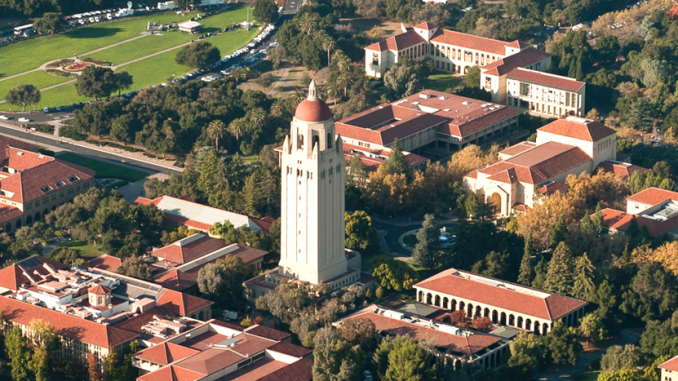
Editor’s note: The Santa Clara County Planning Commission will be meeting tonight (May 30) at Palo Alto City Hall to hear from the public about Stanford’s expansion plan. Specifically, the county Planning Department will present proposed “conditions of approval,” which are requirements the university must meet in order to expand. The meeting starts at 6 p.m. Here’s the agenda.
BY ALLISON LEVITSKY
Daily Post Staff Writer
Santa Clara County planners have little leeway to force Stanford to fund the educations of the 500 students expected to attend the Palo Alto school district while living in tax-exempt campus housing, leaving the county to ask the university for small amounts of funding and to designate land for a future public school site.
The planning department on Wednesday (May 22) released a 125-page document outlining the county’s proposed “conditions of approval” — a set of requirements the county planners want Stanford to meet, pending approval from the Board of Supervisors later this year.
Under the proposed conditions, Stanford would only be allowed to develop a site designated for a future public school for another purpose if the Board has designated another site on campus for future use as a public school.
Earlier this year, Stanford officials claimed there was “no unused Stanford campus land” on or near the housing sites near Quarry Road that could be used for a new elementary school.
Later, when the university entered a $138 million agreement with the school district that was conditional on a since-abandoned development agreement between the county and the university, the university made no promises to put a school on campus land.
No school funding is proposed beyond the state-mandated $4.2 million in developer impact fees.
As a land-use authority, the county can’t require more.
Instead, the county planners are asking Stanford to improve pedestrian and bicycle safety around Nixon and Escondido elementary schools, the two district schools on Stanford’s campus that will likely absorb the new students who live in the university housing.
Those projects include improved sidewalks, high-visibility yellow crosswalks, signs and pavement markings.
If new K-12 students living on the Stanford campus result in a change in attendance boundaries or a new school that requires new routes to school, Stanford may also be asked to pay the city of Palo Alto $20,000 per campus to commission a transportation study on those routes.
In that case, the university would also be asked to provide “fair share” funding, proportional to its share of the students using the routes, for the design and construction of those improvements. Stanford may also be asked to pay the city of Palo Alto to hire new crossing guards.
Board of Supervisors President Joe Simitian said Friday (May 24) that he was 20 pages into the conditions of approval and that it was “too soon to tell” how he might want the board to alter the conditions.
He noted that while he had been in talks with the planning department about the “whole process” over the last couple of years, he doesn’t have the authority to tell them what to include in the recommendations.
“These recommendations reflect the professional staff’s best judgment at this time, and no one is permitted to direct them to provide a specific set of recommendations,” Simitian said. “We’ll all exercise our own best judgment.”
Stanford withdraws from deal
Stanford withdrew from the $138 million agreement it had entered with the school district after the county and university dropped their negotiations for a development agreement.
Development agreements are a way for developers to trade public benefits in exchange for permission to expand.
Simitian has said that the school district could secure funding from the university in a new agreement that, unlike the last one, is not conditional on a development agreement.
Simitian said there are no current plans to reenter talks for a development agreement with the university.
The county Planning Commission and Board of Supervisors will discuss the proposed conditions at a series of public hearings before the board ultimately votes on the conditions, potentially with changes. The Planning Commission will hold one such hearing tonight (May 30) at 6 at Palo Alto City Hall.




Stanford, like Harvard, is primarily a hedge fund, running an endowment that pays little taxes. The limited number of students they educate is a small appendage. This is the best explanation for Stanford’s tight fisted treatment of the neighboring community, and their continuing scheme to dump as many externalities like traffic onto us. Hedge funds don’t have a reputation for public mindedness.
I’m curious to determine how many “free ride” K-12 students Stanford currently dumps into PAUSD. And now they propose to add 500 more, though this number has been questioned, and we should verify it by examining the current ratios.
Narrowly, Palo Alto and Santa Clara County can’t directly force Stanford to pay its fair share for the K-12 students. But in fact this is simply part of a larger negotiation, where approval can be withheld until Stanford agrees to an overall fair deal.
The city or county should use eminent domain to designate land for a new elementary school on the Stanford campus. Stanford has not been negotiating in good faith, and has deployed a lot of sophistry and spin, for example, “oh we agree to talk about a campus a few years from now”, surely an empty promise.